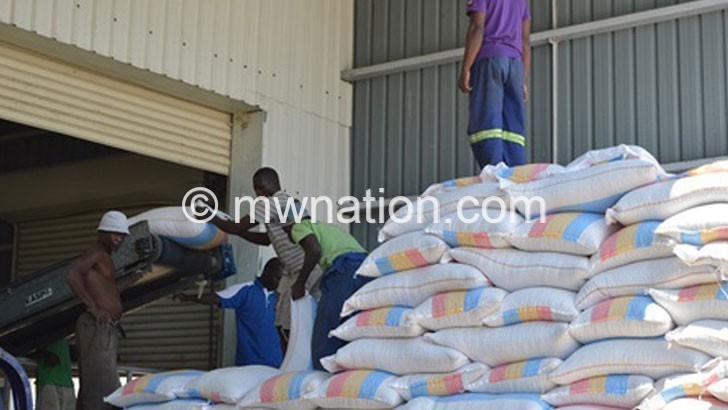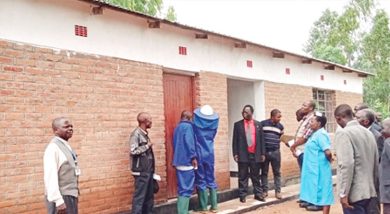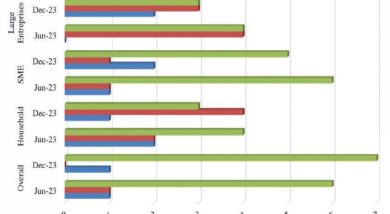Committee queries Mvac on hunger
Parliamentary Committee on Agriculture (PCA) on Wednesday accused Malawi Vulnerability Assessment Committee (Mvac) officials of producing reports on the country’s maize situation that do not match with the reality on the ground.
Citing the 2019 maize situation as presented by Mvac before the committee, the legislators told the three Mvac officials that every year, the figures they produce differ from the reality on the ground.
Mvac, which comprises government ministries and departments, international non-governmental organisations (NGOs) and United Nations (UN) agencies, has been assessing levels of access to food by the population. The committee does this to determine the severity of food and nutrition insecurity and determine food and non-food needs of affected populations, among others.

Ministry of Finance, Economic Planning and Development chief economist Richard Kajombo, whose ministry houses Mvac secretariat, told PCA that through the Integrated Food Security Phase Classification (IPC) process, the population projected to be marginally able to meet minimum food needs are estimated at 1 062 674.
The figure represents seven percent of the Malawi population.
Kajombo told the lawmakers that using the IPC process, the population projected to be in phase one (minimal) or those households that are able to meet essential food and non-food needs without engaging in ‘atypical’ strategies to access food and income are estimated at 10 795 827, representing 68 percent of the population.
He said: “The total number of people facing food gaps and require humanitarian assistance for two to five months is 1.062 million in 27 districts. The affected population will require 33 810 metric tonnes [MT] of maize, costing about K6.7 billion, 6.762MT of pulses costing K10.1 billion, and 1 244MT of vegetable oil costing K2.24 billion.”
On food consumption, Kajombo told the committee that the overall IPC shows that 54 percent of households have an acceptable Food Consumption Score (FCS), while 36 percent have borderline and 10 percent have poor FCS.
However, dissatisfied with the figures, the parliamentary committee members one by one, took Mvac officials to task, describing the figures as misleading, as there should be more Malawians facing hunger this year than the 1.1 million Mvac indicated.
Committee chairperson Sameer Suleman said they were also at pains to note that the Mvac figures were in sharp contrast with those provided to the legislators by Ministry of Agriculture, Irrigation and Water Development officials, who appeared before the committee on Tuesday.
He said: “What we see year in year out is that the figures that Mvac produces eventually do not match with what comes to be reality on the ground.”
Suleman also questioned Mvac’s timing in carrying out its assessment of the food situation in the country soon after harvest between May and June when most people have enough food at household level.
Taking his turn, another member of the committee, Salima North legislator Canaan Kaphamtengo-Yona, said this year’s food situation is different from 2001/02, arguing that, money circulation is lower now than in 2001; hence, the need for government to cushion affected Malawians.
He said: “This, therefore, requires that we find more avenues of helping the affected people in our constituencies, otherwise the majority of [affected] people will die.”
Another member, AbidaSidik Mia, legislator for ChikwawaMkombezi, was sceptical over the purported availability of enough maize in the country, demanding that government should allow the committee to physically check and inspect the said maize stock.
But Mvac Division head who is also Monitoring and Evaluation (M&E) Division director in the Ministry of Finance, Economic Planning and Development Sophie Kang’oma said Mvac uses both primary and secondary data on maize price projections and also crop production estimates from the Ministry of Agriculture, Irrigation and Water Development.
She said the methodology is in line with crop production pattern from the Agriculture Ministry.
During the 2019 Mvac food security assessment, data collection was done in May and the analysis was done in June 2019, using both primary and secondary data.
Said Kang’oma: “Yes, at the time of the assessment, there was more maize but by the time we release the results, the maize will have disappeared. Farmers are keeping the maize and the vendors are hoarding maize to sell during lean period, hence jeopardising the results.”
She said Mvac will update Malawians on the food security situation next month, stressing their work is guided by its regional vulnerability assessment office.
On her part, M&E Division deputy director Victoria Geresomo said Mvac is mandated to conduct its assessment between May and June and update the situation in November each year.
Later in an interview to summarise what transpired during the meeting, Suleman said the committee is aware that 86 000 MT is currently in the hands of traders and that State-owned grain produce trader Agricultural Development and Marketing Corporation (Admarc) has only 17 000 MT in stock.
He said it was disheartening to learn that the same traders who bought the maize at K70 per kilogramme (kg) from helpless farmers are pushing government to buy it at K350 per kg.
In the 2018/19 growing season, the national maize production is estimated at 3.4 million MT, a 26 percent jump from 2.7 million MT in the 2017/18 growing season.
On Monday, Ministry of Agriculture, Irrigation and Water Development Principal Secretary Grey Nyandule-Phiri told The Nation that it will import maize if traders continue hoarding the grain to demand a higher price.
The PS said the local traders have been given ample time to offer their maize for sale to Admarc.
Grain Traders Association and Processors chairperson Grace MijigaMhango also supported the revised maize price of K250/kg, but noted that the traders were playing mind games.
Currently, the National Food Reserve Agency, which manages the Strategic Grain Reserves (SGR), has in stock only 25 000 MT.




